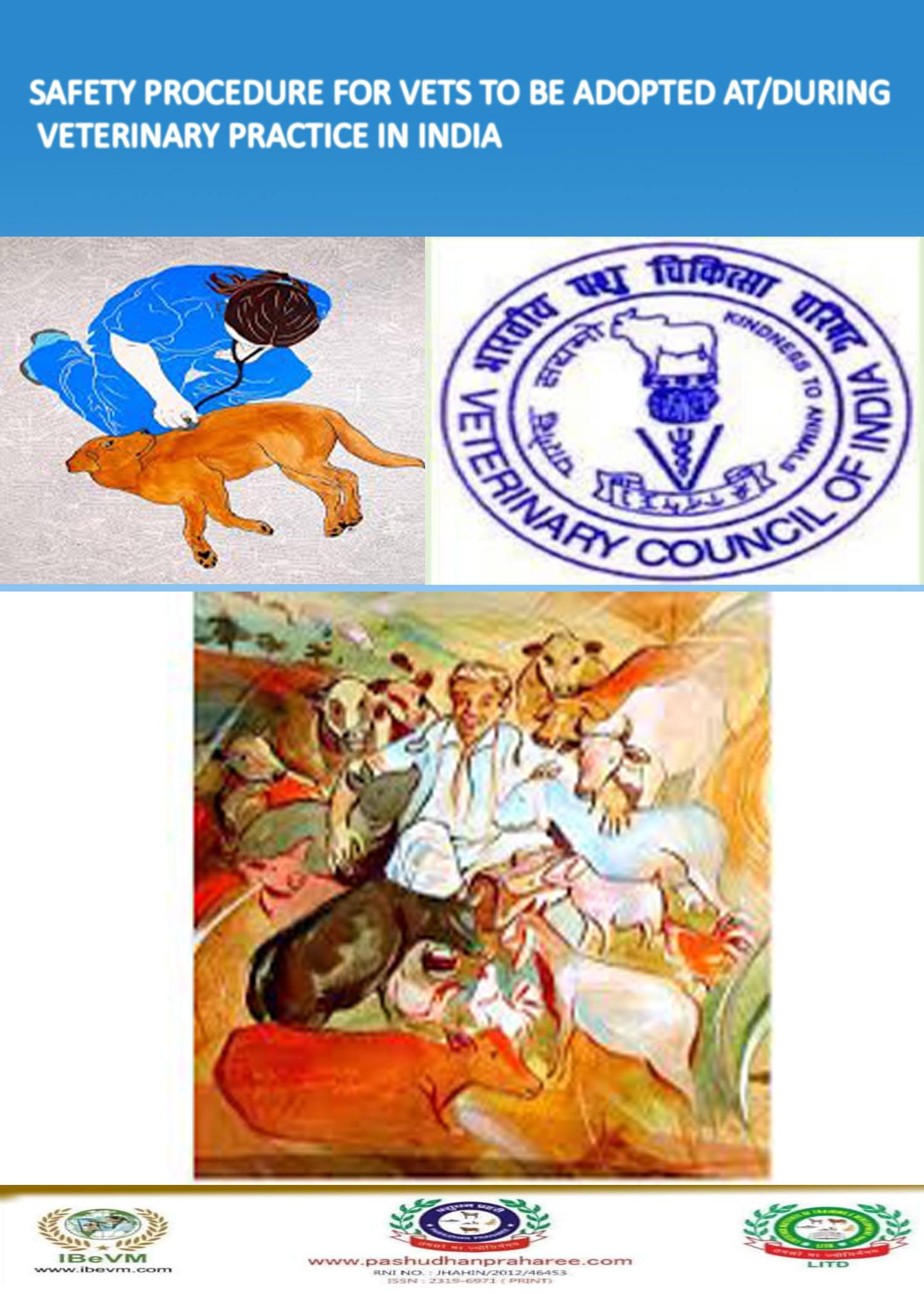SAFETY PROCEDURE FOR VETS TO BE ADOPTED AT/DURING VETERINARY PRACTICE IN INDIA
Post no 1119 Dt 25 /02/2019 Compiled & shared by-DR. RAJESH KUMAR SINGH, (LIVESTOCK & POULTRY CONSULTANT), JAMSHEDPUR, JHARKHAND,INDIA 9431309542, rajeshsinghvet@gmail.com
Source--Veterinary Council of India – (Veterinary Practice) Regulations, 2005
Safety Procedures to be adopted at/during veterinary practice
1. It must be the established policy of all Polyclinics/Veterinary Hospitals/Dispensaries/Clinics/Teaching Veterinary Clinical Complexes/ Institutions to do all that is necessary to ensure the health, safety, and welfare of all of its members, employees and clients. To meet this end, veterinary practices must adopt policies related to matters of health and safety compatible with the guidelines issued for the purpose by respective branches of veterinary profession. Personnel should receive annual updates and additional training when procedures or policy changes.
2. The Heads of clinics/polyclinic/Veterinary institutions have a responsibility to:
a. provide and maintain a safe working environment;
b. provide and maintain facilities for the safety and health of all staff at work;
c. ensure that the equipment in the work place is designed, set up, and maintained to be safe for the users;
d. ensure that staff are not exposed to hazards in the course of their work;
e. the inherent emergency procedures pertaining to the respective field of veterinary procedure should be followed.
3. Each Veterinary institution must establish the following management systems:
a) All institutions must have a written general guideline on health and safety that reflects a positive commitment to protecting people in the work place. The guidelines must be easily understood, be visible, and form the basis for the development of rules and safety procedures for various location providing veterinary services.
b) Separate rules must be drawn up and displayed for each area of the institution(clinics/ polyclinics etc. waiting room, pharmacy, laboratory, treatment room for anaesthesia and radiography, kennel room, etc). These must cover general and specific aspects of health and safety that relate to potential hazards that may occur in those areas. The general rules at veterinary institutions must cover cleanliness, tidiness, restraint of animals, first aid boxes, and fire rules/guidelines. Specific rules must cover relevant protective clothing and equipment, proper use of equipment, handling of drugs, poisons, waste, and chemicals. Specific precaution against zoonotic disease should be displayed.
c) The practice must identify and assess all hazards, and appropriate controls must be developed to protect people from these. Hazards must be monitored in the work place. Staff may need to be personally monitored for their exposure to particular hazards. The work environment must be periodically re-evaluated for new or changed hazards, and safety standards upgraded accordingly.
d) Each Veterinary Institute must have a written, effective, general emergency plan to cope with all types of emergency likely to occur in any part of the clinic. This plan should cover what detection and alarm systems are needed, what emergency equipment is required and its positioning, the development and display of evacuation plans, emergency services required, and staff responsibilities in an emergency.
e) Each Veterinary Institute must record and report all occupational illnesses and accidents. (as specified in guidelines-to be prepared) to the concerned authority.
f) Any Poisons or Harmful Substances as defined in Drug & Cosmetic Act, 1940 & Veterinary Pharmacopoeia must not be stored on or above, or in any cupboard or place where food, drink, or medicines are stored or displayed.
g) Any Standard Poisons or Harmful Substance as defined in the relevant Act and Veterinary Pharmacopoeia should be label properly and displayed and must be kept at a higher place (more than 1.5 metres above the floor).
h) All veterinarians must be immunized against the risk of infectious diseases of zoonotic importance.
4. Any other safety procedure promulgated by the state and/or Central Government related to Veterinary practice or delivery, from time to time shall be binding on all Veterinary Institutions. 5. All persons who work in a laboratory bear responsibility to minimize risk of infection through consistent good safe microbiological practice and procedure. There is need to adopt recommended bio-safety level for dealing with pathogens.


